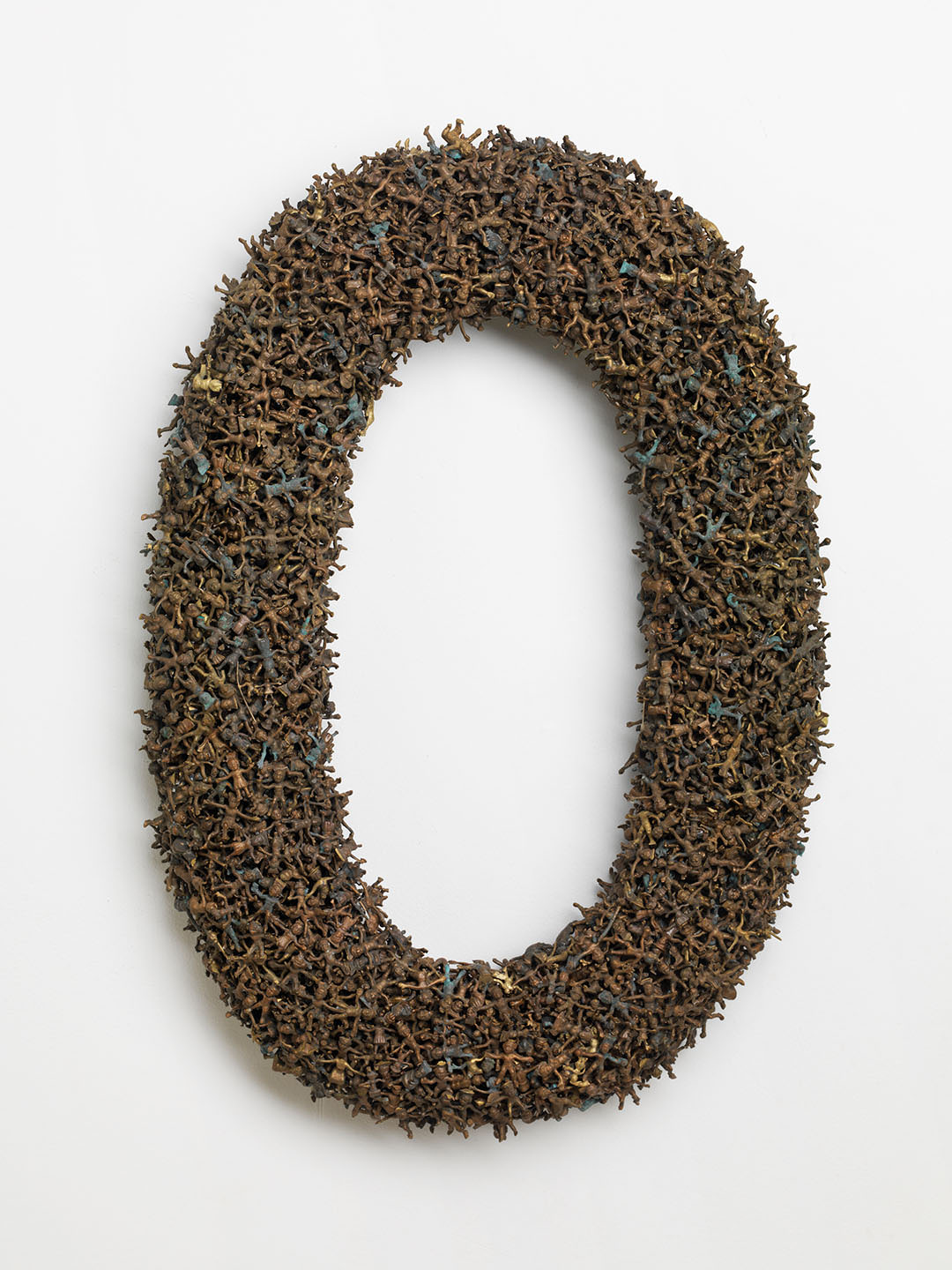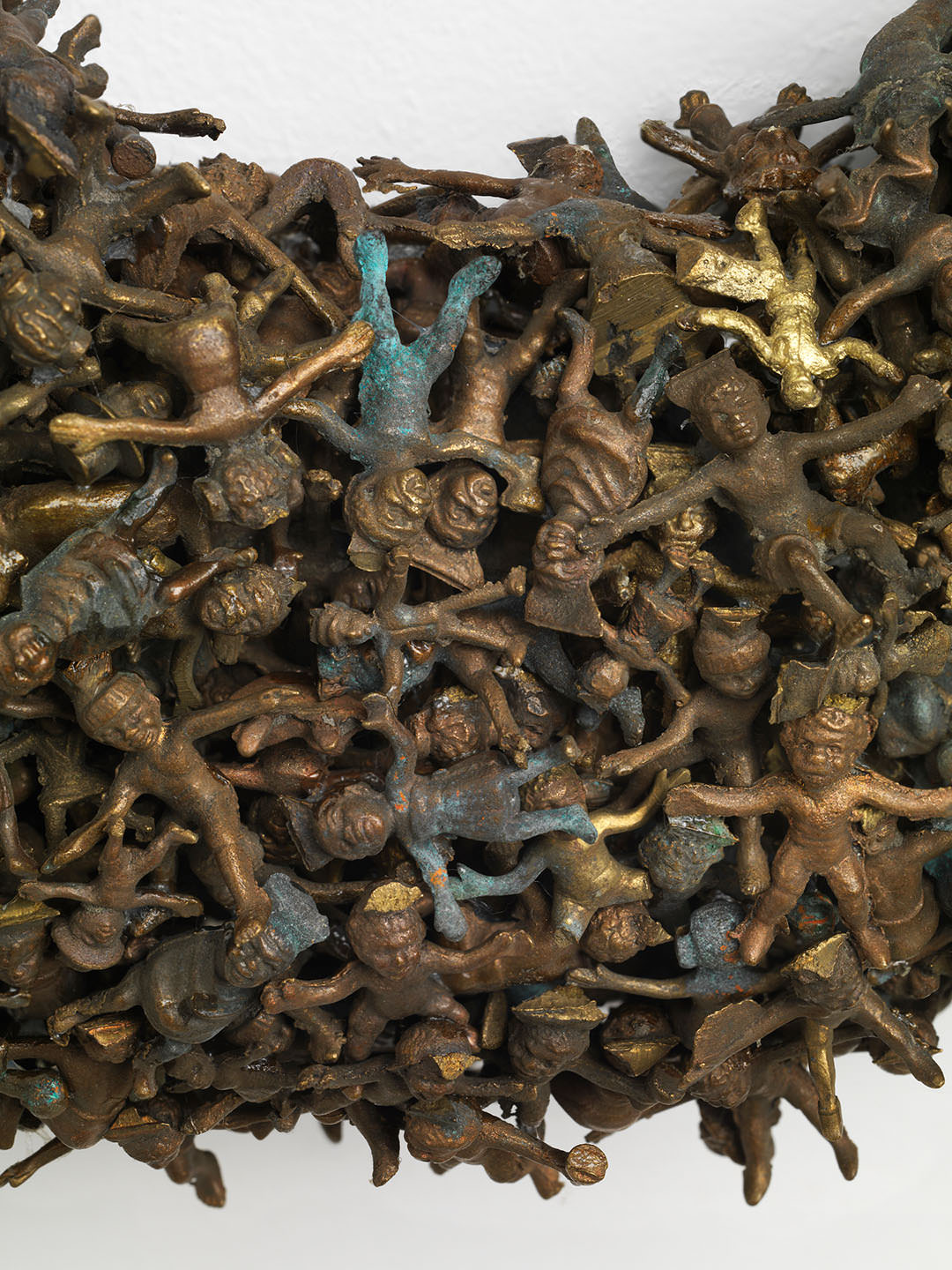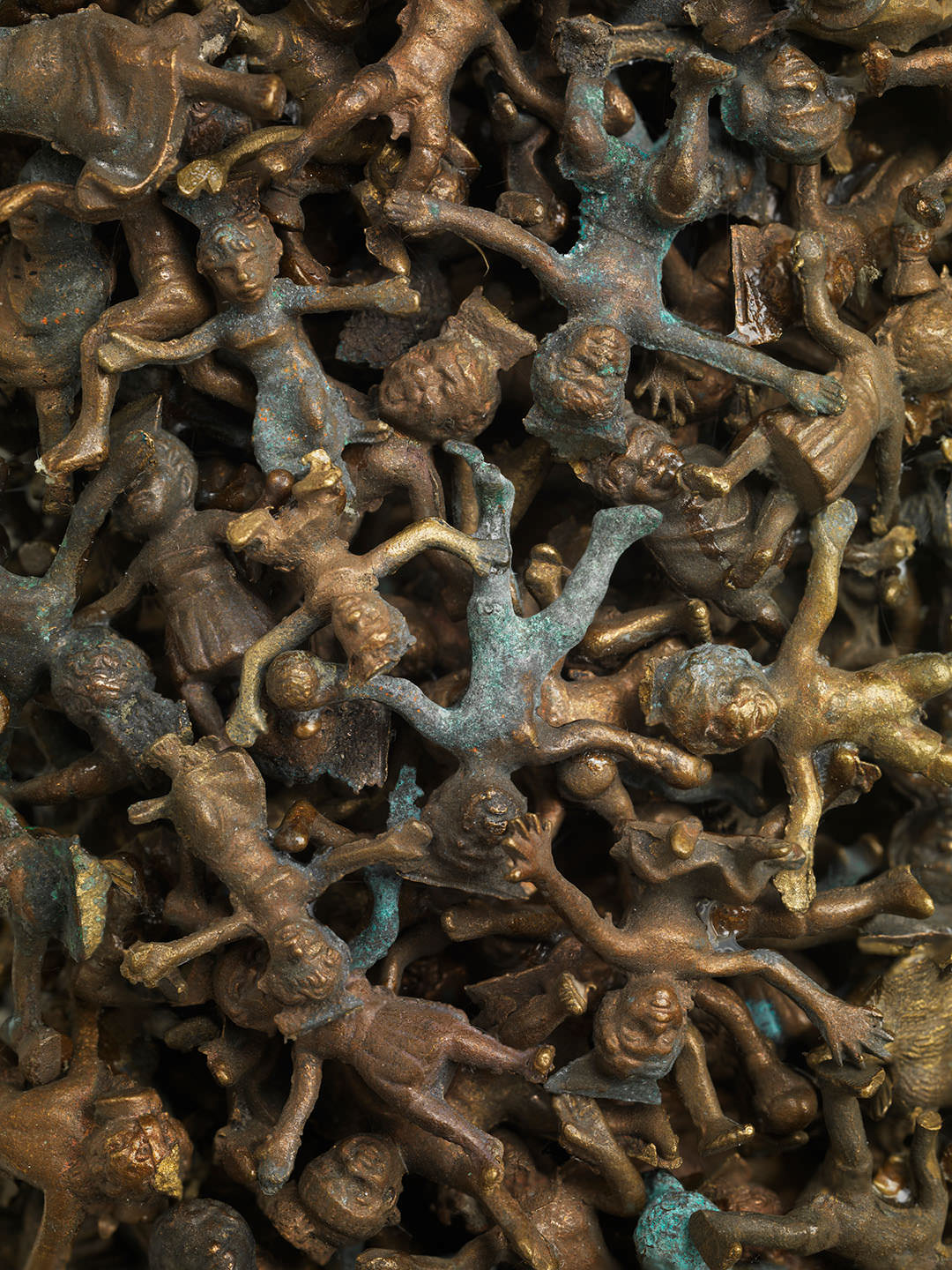DISRUPT THE PROGRAMME!
“Disrupt the programme!“, is a series of artistic works that deals with the scope and complexity of the global, socio-political topics, FLIGHT, MIGRATION AND ASYLUM, and their humanitarian significance for the empathic individual. Although we may not experience it first-hand – or precisely because we do not - it is extremely difficult to come to terms with these events mentally and emotionally. We are lost in a duality of being touched or keeping distance. In the face of these humanitarian disasters and the national and international approach to them, as well as in our daily thinking, action or refrain to help those people, the question arises as to where humanity and our being human is heading. Because: As a result of the sum of all individual consciousness and its social responsibility to act, our entire society, politics and state, have a general responsibility to act.
Swim!
It is not a unique story, but one of many. It is a global socio-political disaster.
It was a young man, who loved a woman very much. Her name was Oluiti. They wanted to be together forever. But just to live, they lacked so much. They barely survived. He felt responsible for Oluiti’s destiny, because how was she to blame for their unbearable life? It was like a burden resting on his shoulders – a yoke that clamped and crushed him. In this desperation he decides to pursue the propositions and keep his hope alive, because he does not see any other way. He does not know whether it is of his own free will. He leaves her and his country behind. He is driven by the perception that somewhere else there may be a life with better chances for himself and the loved ones he left behind, a life lived in peace and freedom. He is not the only one who feels that way. He is one of many, because inequality and misery are unintelligible.
On April 18th, 2015 the ship embarks. Apart from Oluiti’s loved one there are another 1000 people on board the ship. All are driven by misery and responsibilities. That same night the ship sinks 130 kilometers off the coast of Libya. Their lifeless bodies remain behind and sink into oblivion of the ocean. Without names. Their yoke and misery carrying on.
It is the biggest tragedy, with the most victims, in the Mediterranean since the Second World War.
What makes this story so special?
That all these many people, with all their hopes and with the yoke that drags them are a visible sign of fading humanity. They are a trend that is to be accounted for by an increase in abstractions of catchphrases such as “refugee masses or streams of refugees”. Human dignity loses significance because these people are being deprived of their stories.
“It is a last desperate attempt to give these people back their dignity. It is an act of respect towards the dead. Even if I don’t know them, when they are not family members or friends. They remain human beings that died or went missing. When we do justice to the dead, when we honour them, we render the living a great favour. Because we, our civilization, is measured according to how we treat our dead.” Giorgia Mirto, scientist, gathers/records migrants that are interred in Italy quote from “Nr. 387 Ertrunken im Mittelmeer“, (directed by Madeleine Leroyer, France 2019) translation by Alexandra Leisser
Since 2014, an estimated number of more than 20.000 people have lost their lives trying to cross the Mediterranean. (source: Statista Research Department, 29.07.2020) Only few of them could be identified. Their death is recorded for informational purposes only, as a statistical figure of an impersonal mass. Hopes, desires, visions of a live without poverty, violence, hunger, war and persecution, all died with each single individual. Each person had a thousand, seemingly insignificant stories. For as long as we live, we hope; have deeply human desires, beliefs, dreams and visions of a good, happy life of our own. That is what makes us human beings. Above all, hope. All over the world. This fact alone should unite us and not separate us. Birth provides every human being with the right to live.
“Tell me somethin’, girl
Are you happy in this modern world?
Or do you need more?
Is there somethin’ else you’re searchin’ for?”
Shallow; Lady Gaga, Bradley Cooper
We read those statistics about migrants that drowned in the Mediterranean and thus have to acknowledge that these numbers are, on the one hand, the result of exploitative inequality and, on the other, the dramatic withdrawal into the same. The measures introduced by the European refugee policy force the backhaul to Libya of people apprehended at sea. Ships, with those rescued at sea aboard, are even denied permission to enter a port in Italy. The “closing” of the route via the Mediterranean does not improve the situation. People keep on hoping because they have to. Consequently, migrant’s journeys are switching to the much more dangerous route through the Atlantic Ocean.
And yet we don’t feel more, because we are deprived of the stories. What were the names of those who drowned? What were they wearing when they went on board?
“They were tearing at my clothes. But I pushed them away, otherwise I would have drowned too.”, says one of the survivors onboard the ship on which Oluiti’s loved one died. In their inhumane dimension and complexity these disasters manifest something that I, as an empathetic individual, can neither mentally nor emotionally come to terms with. In order to break this state of helplessness and inability to act, of watching in disbelief and eventually, of resigning acceptance, that is accompanied by feelings of rage, pain, sadness and ultimately resignation, I employ the method of externalization. By diverting my personal emotional world into a creative process, I attempt to perceive physically sensitive, rather than cognitive. The result throws a bridge to the outside world – to the observer.
My work is composed of more than 20.000 historical brass figurines – human images – positioned next to each other and on top of each other, with the purpose of them to be intertwined and to come to lie side by side.
All 20.000 of them get their space on this “form”.
In order to reconstruct the enormous number, I wanted to touch and conceive every single figure and get a sensual feeling of their overall weight.
It might be be a rubber dinghy, but also a yoke, like the one cows or horses carry around their neck to pull people’s loads. It is the pattern of a never-ending cycle.
“The leading economic world powers have enforced migration-political patterns aiming at a strict immigration control. These are, on the one hand, restrictive visa and entry regulations for potential immigrants, who are not classified as desirable bearers of (“human”) capital. On the other hand, these are also contracts entered into with the countries of origin, (that are geared to) guarantying the return of those immigrants who for economic reasons are considered to be needed temporarily. Refugees and displaced persons, who within the past two, three decades have been confronted with the closing of many migration channels, meaning legal channels for migration, offered by asylum systems, come under general suspicion of being a potential burden on the security, economy, social security systems or specific cultural values and political ideals of a society.
The development of the EC/EU’s migration policy refers to these restrictive components. So far, the cooperation of the member states has been essentially limited to the development of restrictive regulations for a common border- and visa policy as well as to co-operation efforts limiting the number of asylum seekers.”
Dr.phil.habil Jochen Oltmer, Professor for Modern History and head of the board of the Institute for Migration Research and Intercultural Studies (IMIS) at Osnabrück University
- Idea, concept and realization: STEINWIDDER, 2020
- Photos: Klaus Fritsch
- Text: Anita Steinwidder, Erika Eisenhut
- Translation: Alexandra Leisser
- A much obliged thank you to Erika Eisenhut for her text-feedback and editing, as well as to Stephan Schwarz for supplying the unique historic brass ware, that enabled me to develop this object, and also for his input and feedback.
This work is dedicated to every single one of the estimated more than 20.000 people who, since 2014, have lost their lives trying to cross the Mediterranean, and to all of their families, friends and loved ones.
FOR NONE OF US ARE VICTIMS, WE ARE ALL AGENTS.



Swim!
Historical brassware; cords and yarns made of natural fibers and paper; strings made of straw; metal glue; back-mounted suspension;
35 cm × 52 cm × 7 cm
Artwork and prints: available